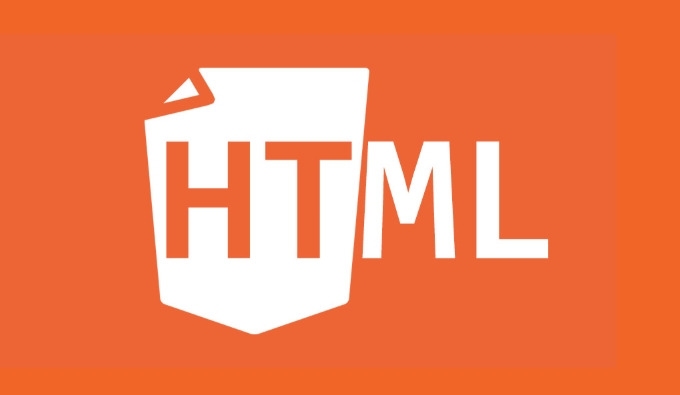H5 Credit Card Autofill and Payment Integration Best Practices
Jul 23, 2025 am 02:39 AMThe key to the integrated credit card autofill and payment of H5 pages is security, smooth experience and compatibility. 1. Ensure that mainstream browsers support Autofill, correctly set the autocomplete attribute of the input tag and retain the form tag; 2. Embed the third-party payment platform through iframe or use the tokenization process to avoid exposure of sensitive information; 3. Optimize the process to reduce jumps, use embedded components and ensure loading speed and interactive prompts; 4. Tests must cover real scenarios, including multiple card selection, information update, different browser performance and network exception handling.

The H5 page uses credit card automatic filling and payment integration, but in fact there are only a few key points: security, smooth experience, and compatibility. Don’t look at it as a front-end function, it is possible that user payment failure or information leakage may occur.

1. Ensure that the automatic filling function is available in mainstream browsers
Now most mobile browsers support Autofill functions, such as Chrome, Safari, WeChat browser, etc., but their implementation methods are slightly different. You want to confirm whether the autocomplete property of the input tag is set correctly, like:
-
autocomplete="cc-name"corresponds to the cardholder's name -
autocomplete="cc-number"is the card number -
autocomplete="cc-exp"is valid -
autocomplete="cc-csc"is CVV code
Only when these fields are written correctly can the browser recognize and an automatic fill prompt pop up. If you are using a custom component or a React/Vue encapsulated input box, remember to pass the native attributes through, otherwise it may not trigger.

In addition, some browsers only enable Autofill in the form submission context, so it is recommended that you still retain the form tag and do not rely entirely on JS to control the process.
2. Avoid direct exposure of sensitive information to the front end
Many people think that as long as you use HTTPS, everything will be fine, but in fact it is not. When processing credit card information on the H5 page, it is best to embed third-party payment platforms (such as Stripe Elements, Alipay, and WeChat JSAPI) through iframes, so that sensitive data will not pass through your server.

Even if you collect the card number yourself, you have to go through the Tokenization process, that is, after you get the card information, you will send it to the payment gateway to generate a token as soon as possible, instead of in your own database. Even if the front-end is accidentally attacked by XSS, it can reduce the risk.
There is another small detail that is easy to ignore: don't display the full card number on the page, even if it's masked. It is safer to display the token or card end number.
3. Optimize payment process to reduce jumps and interruptions
H5 payment is most afraid of jumping around. For example, if you jump from the page to the external cash register and then jump back, users will easily lose. Therefore, it is recommended to use embedded payment components to keep the process completed on the current page.
If you are connected to a domestic bank or third-party payment channel, you may encounter situations where you must jump. At this time, make sure that the jump is triggered through window.location or <a></a> tags, rather than loading the iframe with AJAX, otherwise it may be intercepted by the browser.
Another thing is loading speed. Some payment SDKs are not small in size, so it is recommended to load asynchronously and add a loading status prompt to let the user know that it is not stuck.
4. Testing cannot be saved, especially real scene simulation
Before going online, you must use a real card to test a few rounds, and don’t rely solely on the sandbox environment. Sometimes the simulator can pass, but the real machine fails to fill in due to problems such as keyboard popping up, screen rotation, network delay, etc.
We recommend that you prepare several typical situations:
- Is the card selection logic smooth for users who bind multiple cards
- Will Autofill update after the card information is changed?
- How consistent UI under different browsers
- When the network is slow, how to deal with request timeout
Basically that's it. Credit card automatic filling and payment integration don't seem complicated, but there are many details, especially security aspects that cannot be careless.
The above is the detailed content of H5 Credit Card Autofill and Payment Integration Best Practices. For more information, please follow other related articles on the PHP Chinese website!

Hot AI Tools

Undress AI Tool
Undress images for free

Undresser.AI Undress
AI-powered app for creating realistic nude photos

AI Clothes Remover
Online AI tool for removing clothes from photos.

Clothoff.io
AI clothes remover

Video Face Swap
Swap faces in any video effortlessly with our completely free AI face swap tool!

Hot Article

Hot Tools

Notepad++7.3.1
Easy-to-use and free code editor

SublimeText3 Chinese version
Chinese version, very easy to use

Zend Studio 13.0.1
Powerful PHP integrated development environment

Dreamweaver CS6
Visual web development tools

SublimeText3 Mac version
God-level code editing software (SublimeText3)
 Adding drag and drop functionality using the HTML5 Drag and Drop API.
Jul 05, 2025 am 02:43 AM
Adding drag and drop functionality using the HTML5 Drag and Drop API.
Jul 05, 2025 am 02:43 AM
The way to add drag and drop functionality to a web page is to use HTML5's DragandDrop API, which is natively supported without additional libraries. The specific steps are as follows: 1. Set the element draggable="true" to enable drag; 2. Listen to dragstart, dragover, drop and dragend events; 3. Set data in dragstart, block default behavior in dragover, and handle logic in drop. In addition, element movement can be achieved through appendChild and file upload can be achieved through e.dataTransfer.files. Note: preventDefault must be called
 Using ARIA attributes with HTML5 semantic elements for accessibility
Jul 07, 2025 am 02:54 AM
Using ARIA attributes with HTML5 semantic elements for accessibility
Jul 07, 2025 am 02:54 AM
The reason why ARIA and HTML5 semantic tags are needed is that although HTML5 semantic elements have accessibility meanings, ARIA can supplement semantics and enhance auxiliary technology recognition capabilities. For example, when legacy browsers lack support, components without native tags (such as modal boxes), and state updates need to be dynamically updated, ARIA provides finer granular control. HTML5 elements such as nav, main, aside correspond to ARIArole by default, and do not need to be added manually unless the default behavior needs to be overridden. The situations where ARIA should be added include: 1. Supplement the missing status information, such as using aria-expanded to represent the button expansion/collapse status; 2. Add semantic roles to non-semantic tags, such as using div role to implement tabs and match them
 Securing HTML5 web applications against common vulnerabilities
Jul 05, 2025 am 02:48 AM
Securing HTML5 web applications against common vulnerabilities
Jul 05, 2025 am 02:48 AM
The security risks of HTML5 applications need to be paid attention to in front-end development, mainly including XSS attacks, interface security and third-party library risks. 1. Prevent XSS: Escape user input, use textContent, CSP header, input verification, avoid eval() and direct execution of JSON; 2. Protect interface: Use CSRFToken, SameSiteCookie policies, request frequency limits, and sensitive information to encrypt transmission; 3. Secure use of third-party libraries: periodic audit dependencies, use stable versions, reduce external resources, enable SRI verification, ensure that security lines have been built from the early stage of development.
 Integrating CSS and JavaScript effectively with HTML5 structure.
Jul 12, 2025 am 03:01 AM
Integrating CSS and JavaScript effectively with HTML5 structure.
Jul 12, 2025 am 03:01 AM
HTML5, CSS and JavaScript should be efficiently combined with semantic tags, reasonable loading order and decoupling design. 1. Use HTML5 semantic tags, such as improving structural clarity and maintainability, which is conducive to SEO and barrier-free access; 2. CSS should be placed in, use external files and split by module to avoid inline styles and delayed loading problems; 3. JavaScript is recommended to be introduced in front, and use defer or async to load asynchronously to avoid blocking rendering; 4. Reduce strong dependence between the three, drive behavior through data-* attributes and class name control status, and improve collaboration efficiency through unified naming specifications. These methods can effectively optimize page performance and collaborate with teams.
 HTML5 video not playing in Chrome
Jul 10, 2025 am 11:20 AM
HTML5 video not playing in Chrome
Jul 10, 2025 am 11:20 AM
Common reasons why HTML5 videos don't play in Chrome include format compatibility, autoplay policy, path or MIME type errors, and browser extension interference. 1. Videos should be given priority to using MP4 (H.264) format, or provide multiple tags to adapt to different browsers; 2. Automatic playback requires adding muted attributes or triggering .play() with JavaScript after user interaction; 3. Check whether the file path is correct and ensure that the server is configured with the correct MIME type. Local testing is recommended to use a development server; 4. Ad blocking plug-in or privacy mode may prevent loading, so you can try to disable the plug-in, replace the traceless window or update the browser version to solve the problem.
 Using HTML5 Semantic Elements for Page Structure
Jul 07, 2025 am 02:53 AM
Using HTML5 Semantic Elements for Page Structure
Jul 07, 2025 am 02:53 AM
Using HTML5 semantic tags can improve web structure clarity, accessibility and SEO effects. 1. Semantic tags such as,,,, and make it easier for the machine to understand the page content; 2. Each tag has a clear purpose: used in the top area, wrap navigation links, include core content, display independent articles, group relevant content, place sidebars, and display bottom information; 3. Avoid abuse when using it, ensure that only one per page, avoid excessive nesting, reasonable use and in blocks. Mastering these key points can make the web page structure more standardized and practical.
 Drawing Graphics and Animations using HTML5 Canvas
Jul 05, 2025 am 01:09 AM
Drawing Graphics and Animations using HTML5 Canvas
Jul 05, 2025 am 01:09 AM
HTML5Canvas is suitable for web graphics and animations, and uses JavaScript to operate context drawing; ① First add canvas tags to HTML and get 2D context; ② Use fillRect, arc and other methods to draw graphics; ③ Animation is achieved by clearing the canvas, redrawing, and requestAnimationFrame loops; ④ Complex functions require manual processing of event detection, image drawing and object encapsulation.
 Embedding video content using the HTML5 `` tag.
Jul 07, 2025 am 02:47 AM
Embedding video content using the HTML5 `` tag.
Jul 07, 2025 am 02:47 AM
Embed web videos using HTML5 tags, supports multi-format compatibility, custom controls and responsive design. 1. Basic usage: add tags and set src and controls attributes to realize playback functions; 2. Support multi-formats: introduce different formats such as MP4, WebM, Ogg, etc. through tags to improve browser compatibility; 3. Custom appearance and behavior: hide default controls and implement style adjustment and interactive logic through CSS and JavaScript; 4. Pay attention to details: Set muted and autoplay to achieve automatic playback, use preload to control loading strategies, combine width and max-width to achieve responsive layout, and use add subtitles to enhance accessibility.






